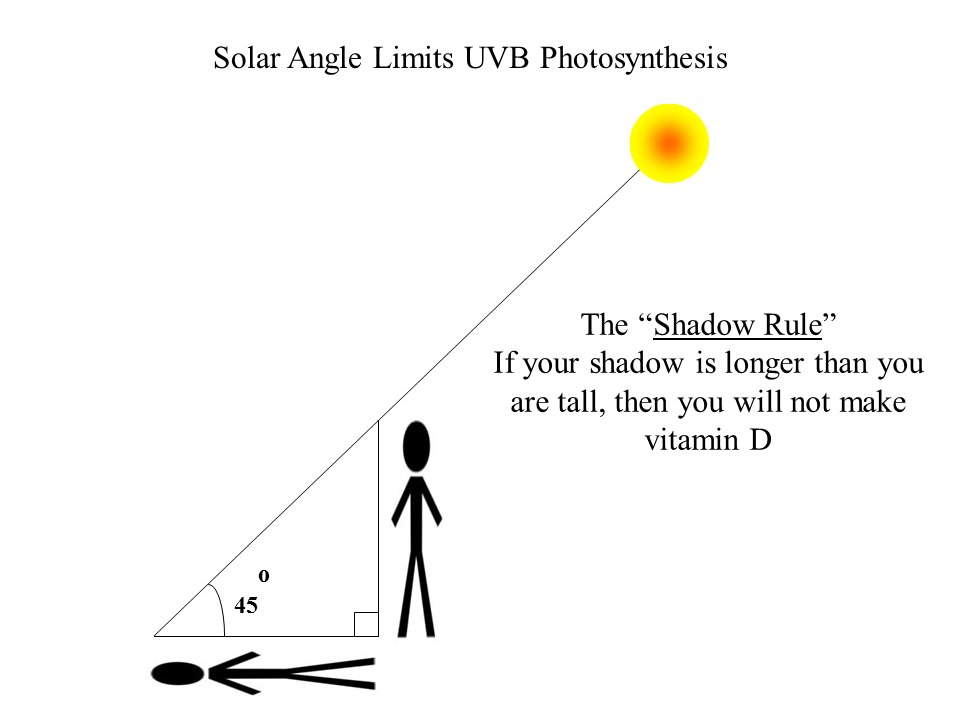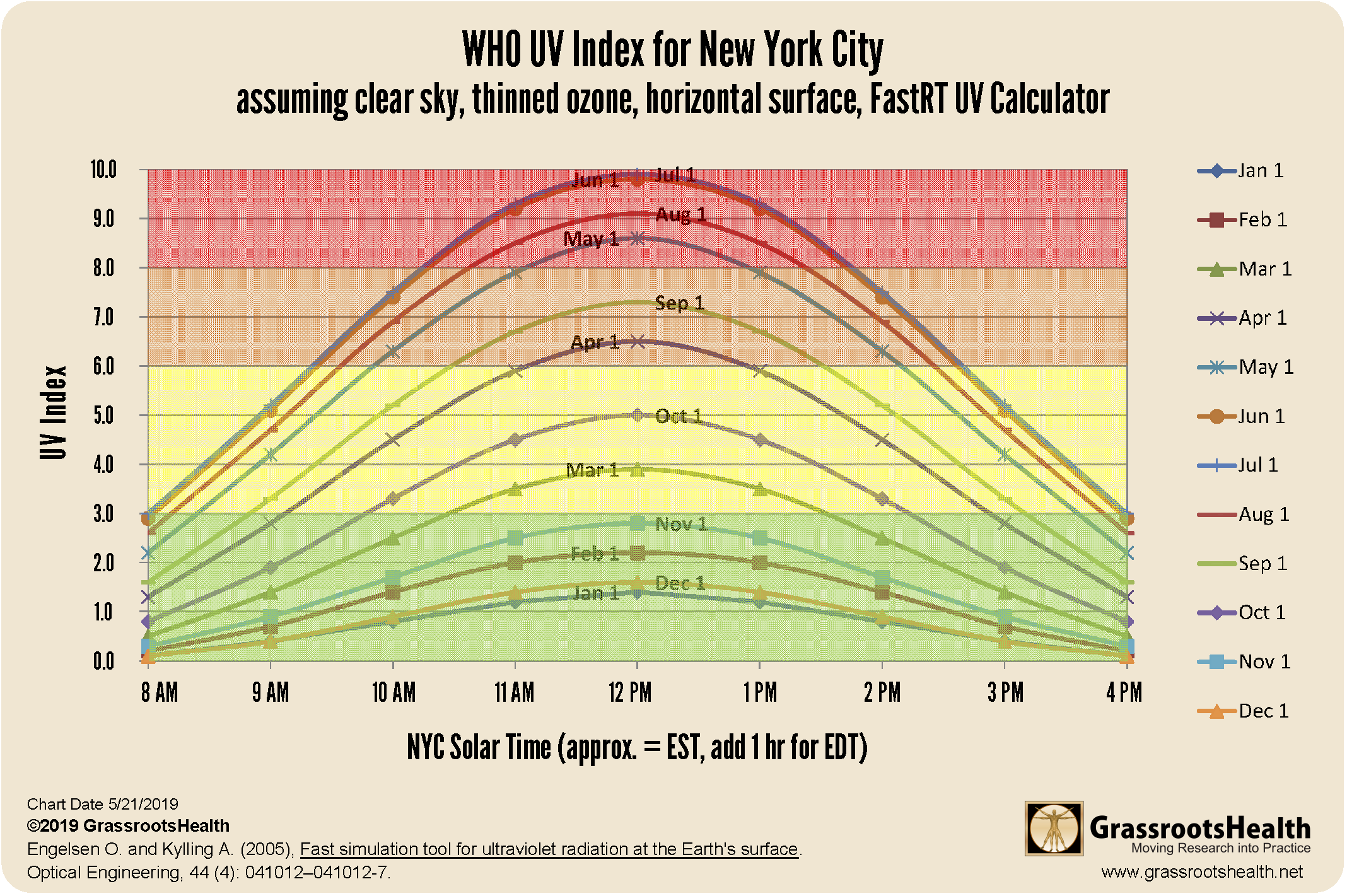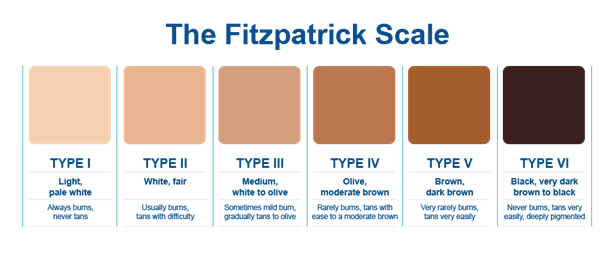How to Safely & Effectively Make Vitamin D from Sunshine

From GrassrootsHealth
It’s easy to safely rely on sun exposure to make vitamin D with these simple facts and tools
 Vitamin D is widely known as the “sunshine vitamin.” It is made in the skin following direct exposure to UVB rays, which are not always readily available whenever the sun is shining, since the presence of UVB depends on the angle of the sun to the earth.
Vitamin D is widely known as the “sunshine vitamin.” It is made in the skin following direct exposure to UVB rays, which are not always readily available whenever the sun is shining, since the presence of UVB depends on the angle of the sun to the earth.
Some studies show that vitamin D levels in the range of 40-60 ng/ml (100-150 nmol/L) can be achieved with sun exposure alone, in groups such as lifeguards in southern California or hunter-gatherer tribes in Africa. However, it takes more than exposing just the face, arms and legs for only 10-15 minutes per day for most people, and many may not be able get enough exposure simply due to other factors such as skin type, burning threshold, latitude, cloud cover, and time availability. These important factors are covered below. Watch this video for a jump-start on a few simple ways to know if you are making vitamin D from the sun.
Is the UV Index Above 3?
The ultraviolet (UV) Index is a measurement of the strength of the sun’s UV rays at a particular place and time. An index of 0 occurs at night when there is no UV radiation and an index of 10 corresponds approximately to mid-day summer sunlight without cloud cover (values above 10 can be found in high altitudes, near the Equator, and locations with higher ozone layer depletion).

The UV Index must be over 3 to make vitamin D, which usually occurs around midday between 10am and 2pm. UV Index varies tremendously depending on the time of day, time of year, latitude, weather, air pollution, and geographical location. You can check the UV Index on your smart phone using the weather app or you can use the free dminder app – an app that tracks sunlight and vitamin D production to maximize your body’s vitamin D generation while helping to prevent burning.
Are You Taller than Your Shadow?
While you are outside in the sunshine, look at your shadow. Is it shorter than you are?

All you have to do is look at the ground to see if the length of your shadow is shorter than your height. It’s that easy! If your shadow is shorter than your height, the sun is high enough in the sky to let UVB rays shine through and reach the ground, and your skin. Early morning and early evening, when our shadows are taller than we are, only provide us with UVA sunlight (good for making nitric oxide), not UVB which is necessary for vitamin D production.
Where do You Live, and What Time of Year is it?
When you can make vitamin D is also dependent on latitude and season. Those who live closer to the equator, where the midday sun is high in the sky throughout the year, have the ability to produce vitamin D year-round, whereas those north of about 34 degrees latitude (approximately Los Angeles, CA, or Atlanta, GA) experience a “vitamin D winter” for some period of time between fall and early spring when the sun never gets high enough in the sky to enable vitamin D production.

The chart above shows the typical variation of UV Index by time of day and time of year in New York City. As you can see, in New York City, the UV Index varies widely based on the season and time of day.
Are You Covering Up Too Much?
Greater amounts of vitamin D are made when more skin is exposed, without sunscreen, especially the back and shoulders, as these contain the most surface areas on your body. It is better to expose more skin for less time to ensure you do not overexpose yourself and burn. Ideally your skin should be exposed to the sun on a 90-degree angle. Since sunscreen blocks the UVB rays needed to produce vitamin D, it should be applied only after the exposure time allotted for making vitamin D.
Will the Color of Your Skin Slow Vitamin D Production?
Knowing your skin type is important for personalizing your sun exposure. The Fitzpatrick scale, shown below, classifies six skin types based on the response of different skin types to UV radiation. This skin type quiz can help you determine your type.

Credit www.perfectimage-llc.com
The darker your skin, the more melanin it contains and the less likely you are to burn. Melanin acts like a natural sunscreen and while the amount of melanin in skin is primarily genetic, it can also increase gradually through sensible sun exposure. The sun protection factor (SPF) of a natural tan is roughly equivalent to the actual protection of an SPF 50 sunscreen for an average user, considering most users apply only 25% of the recommended amount. Interestingly, scientists believe that skin pigment lightened as humans moved away from the equator to enable the body to make more vitamin D from locations that had less UVB available throughout the year.
How Much Time do You Need?
The amount of time spent in the sun can also be personalized according to skin type and UV Index. Once you have identified your skin type, you can use tools such as the free dminder app to approximate how much time you can spend in the sun without burning. dminder uses EPA burn data, self-reported skin type, location, and current UV Index to approximate when burning might occur and gives you an alarm before that time. Whether or not you choose to use an app, it is important to allow skin to gradually acclimate to the sun, especially for those who spend a lot of time indoors, have lighter skin, after winter months, or during sun-seeking vacations. Under the right conditions, the body can produce 10,000 to 25,000 IU of vitamin D with full body exposure in just under the time it takes for your skin to turn pink. It is safer to increase exposure time gradually as this allows your skin to adapt to the sun’s intensity. As the season gets warmer and sunnier, exposed skin will adapt to produce a tan. You never have to worry about making too much vitamin D from the sun because your body self-regulates by stopping production when it has reached its limit.
Will Your Age Slow You Down?
As a person ages, the amount of the precursor substance needed to make vitamin D decreases, lowering their skin’s ability to produce it.
Other Factors that Affect Vitamin D Production
Also keep in mind that the quality of sun exposure is important for vitamin D synthesis. Cloud coverage, air pollution, sunscreen, and shade cast off from buildings all disrupt the direct contact of sunlight on our skin.
Here are a few myths about vitamin D and sunshine:
- The skin cannot produce vitamin D from sunlight shining through a window – so do not assume you are getting your D while driving in your car with the AC on and windows up. The windows block the UVB from sunlight.
- You cannot wash vitamin D produced in the skin off! So, no worries if you take a shower after spending some time at the beach – you’ll do a good job of washing the sand off, but that vitamin D (which was produced in the deeper layers of the skin) will remain.
- Don’t expect to make vitamin D while also slathering on the sunscreen. Sunscreen blocks the UVB rays that produce vitamin D.
When sunshine is not an option for you, using an indoor UV device may help
What can be done during the winter months, or when going outside at midday is not an option for you? In a previous post, we analyzed data from the GrassrootsHealth cohort to show that participants who did not supplement with vitamin D could reach the recommended level of 40-60 ng/ml (100-150 nmol/L) with the regular use of indoor UVB devices. This is great news!
When considering using a source of artificial UV light, it is important to be aware of the type of UV, its safety, and the physiological effects it may produce, especially in terms of vitamin D. Indoor sun and UVB lamps and bulbs are effective at helping to boost vitamin D production in the skin. Perhaps, in the near future, homes and offices will incorporate these UVB lamps and bulbs needed to make vitamin D. Be mindful that some of these lamps may only offer UVB and no UVA exposure, so vitamin D may be produced with exposure, but not nitric oxide, and the full benefits of sunshine may not be achieved.
Click here to read more from GrassrootsHealth.
SmartTan.com news articles regularly report medical and scientific information to keep you abreast of current events related to UV light. This information is not intended to be used by any party to make unwarranted health claims to promote sunbed usage. Indoor tanning businesses are obligated to communicate a fair and balanced message to all clients about your products and services including the potential risks associated with indoor tanning. Contact your Smart Tan representative to find out more about what you can and can’t say in your tanning salon business.
© 2021 International Smart Tan Network. All rights reserved.
